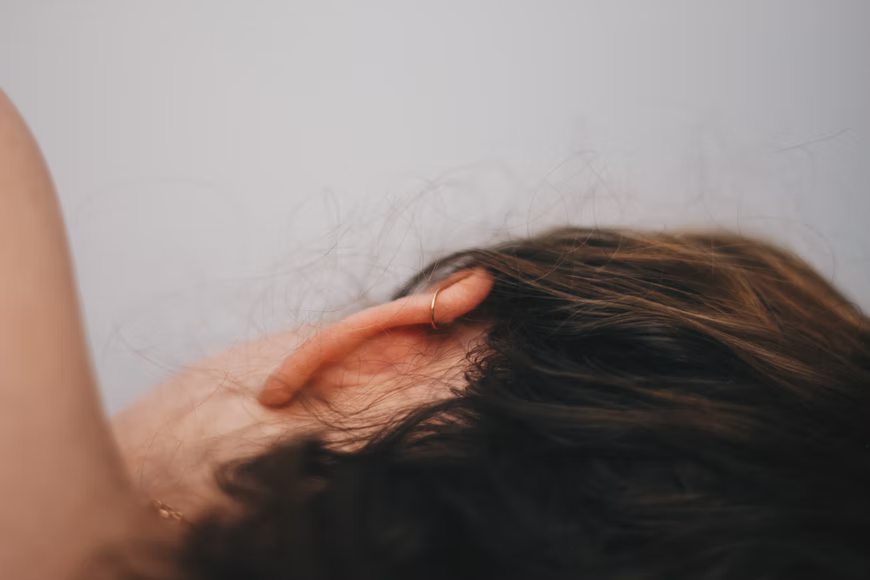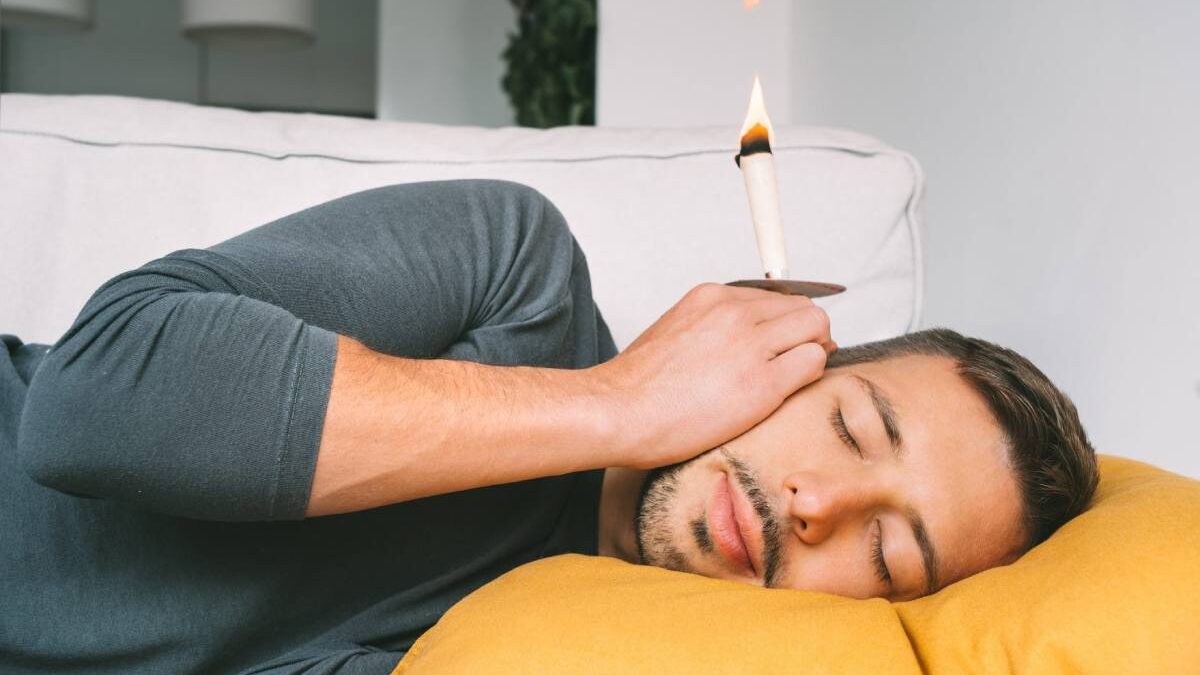If you’ve never heard of it before, coning or ear candling is an alternative form of therapy that some individuals use to draw out wax and impurities from the ear. The ear candling technique can vary, but it usually involves ear candles about 10-inch long, tapered, and hollow. The candles are made of beeswax and paraffin or fabric dipped in wax.
In the United States, the FDA disapproves ear candles for medical use because they are often associated with serious side effects. It has sent warnings to manufacturers to stop the import of ear candles. According to the FDA, ear candling can provoke bleeding, ears getting plugged by wax, a perforated eardrum, and burns on the middle ear, eardrum, ear canal, and face.
Table of Contents
Is Ear Candling Safe?
Before we can answer that, it’s best we understand how the entire process works. The tapered end of the candle is placed in the ear, then lit at the broadest end. The flame, by creating suction, is supposed to pull out wax from the ears, or that’s what practitioners claim. It would be best to have a covering so the wax doesn’t go into your ear. Once the covering and candle are positioned, the candle must stay in for ten to twenty minutes. After that, the suction will draw the ear wax to the surface.
Of course, holding a lit candle close to your face for 20 minutes is not safe. Ear candling has no proof supporting its use, and it is risky since it can cause harm to your ears. The candle wax can clog the ear passage by dripping into the canal, affecting your hearing. In addition, there are reports of harmed eardrums after the process.

However, if you still decide to go with this procedure, you can assist your body’s cleansing process by following these tips:
What (Not) to Drink and Eat
Drink plenty of tea and water to eliminate toxins and flush out the lymphatic system, and as a bonus, the liquids will rehydrate you. Eating light and nutritious meals will help you in recovering faster. You should avoid eating dairy, especially cheese and milk, as they can produce mucus. We recommend reducing caffeine and alcohol intake at least two days after the treatment.
Things Not to Do
Don’t expose your ears to extreme weather conditions. And it’s crucial not to be exposed to the wind. Keep them covered in the next 24 hours after your treatment. Don’t put your head underwater, but if you need to take a shower, please put on earplugs. The same goes if you decide to swim.
Things to Do
You should rest as much as possible to avoid any side effects. After the ear candling treatment, the most important thing you can do is listen to your body. Rest if you feel like it, binge-watch some Netflix shows, take a walk, or enjoy a warm bath with your earplugs. Just make sure not to over-exert yourself.

Don’t Panic if You Experience Some Side Effects
After your first treatment, it is perfectly normal to experience some temporary side effects. For example, you may experience dizziness, headaches, or cold-like symptoms. If a runny nose is one of the symptoms, please don’t sniffle – blow it. But if you already had a cold during the treatment, your symptoms might worsen.
You may experience increased urination, itchy ears, dry mouth, and throat, but these symptoms usually last two days. Ear wax might naturally get out of your ears in the following two days, so it’s advisable to put towels on your pillows to prevent staining. Make sure to wait 48 hours between candling treatments.
Conclusion
Practitioners claim that ear candling can relieve pressure from behind the eardrum, treat sinus infections, improve hearing, ease headache, earache, and sore throat, and help with relaxation by reducing stress and tension. However, all these claims are scientifically unconfirmed. No study has ever proven that ear candling does these wonders.
Ear candling is a potentially unsafe and dangerous alternative treatment that can cause serious injuries, and even the FDA warns people to avoid using ear candles. At the end of the day, earwax isn’t the worst thing since it protects the ear canal from fungus and bacteria. But, if you still decide to remove earwax, please visit your doctor to do a professional ear cleaning.

